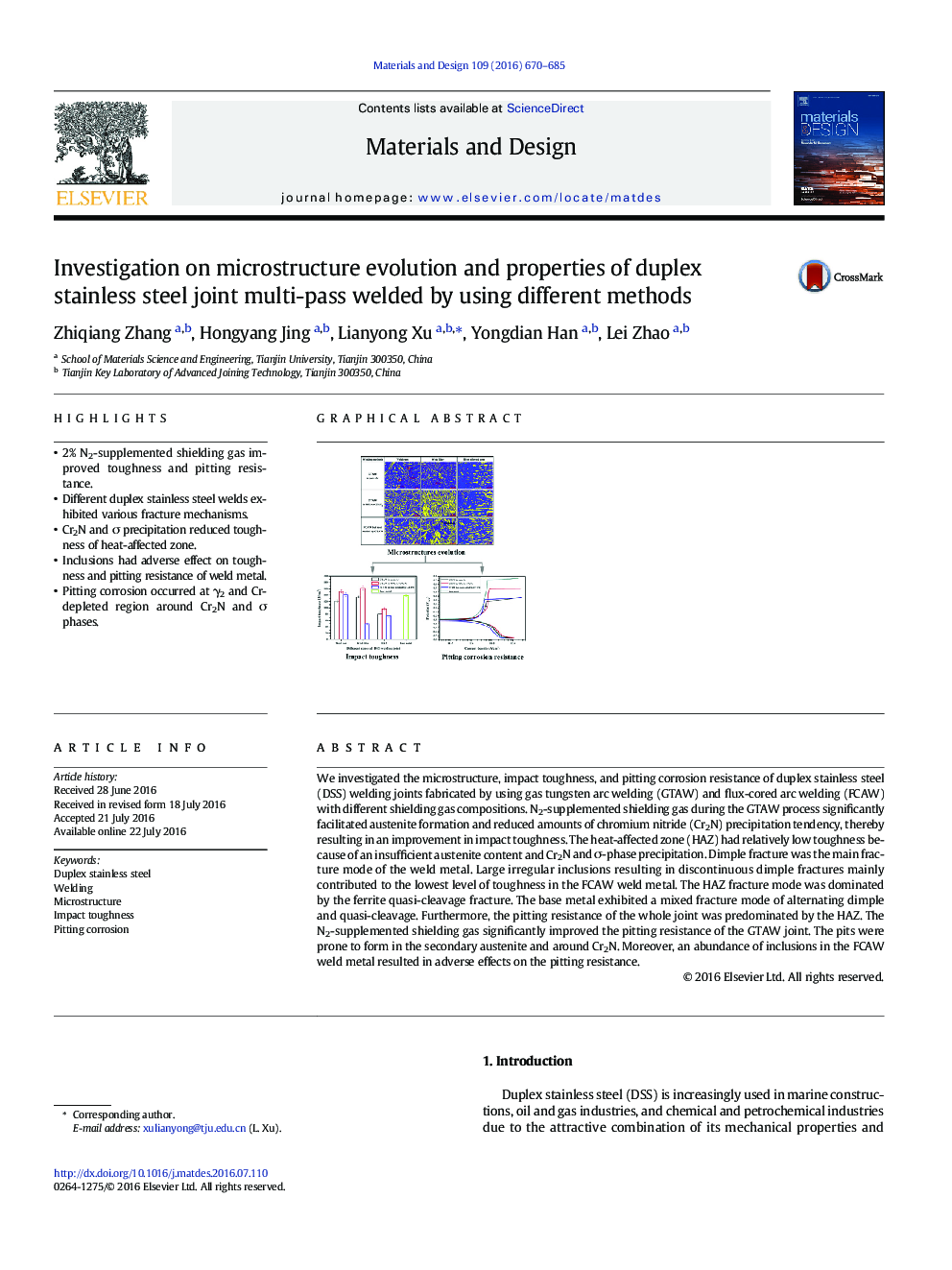| کد مقاله | کد نشریه | سال انتشار | مقاله انگلیسی | نسخه تمام متن |
|---|---|---|---|---|
| 827740 | 1470273 | 2016 | 16 صفحه PDF | دانلود رایگان |
• 2% N2-supplemented shielding gas improved toughness and pitting resistance.
• Different duplex stainless steel welds exhibited various fracture mechanisms.
• Cr2N and σ precipitation reduced toughness of heat-affected zone.
• Inclusions had adverse effect on toughness and pitting resistance of weld metal.
• Pitting corrosion occurred at γ2 and Cr-depleted region around Cr2N and σ phases.
We investigated the microstructure, impact toughness, and pitting corrosion resistance of duplex stainless steel (DSS) welding joints fabricated by using gas tungsten arc welding (GTAW) and flux-cored arc welding (FCAW) with different shielding gas compositions. N2-supplemented shielding gas during the GTAW process significantly facilitated austenite formation and reduced amounts of chromium nitride (Cr2N) precipitation tendency, thereby resulting in an improvement in impact toughness. The heat-affected zone (HAZ) had relatively low toughness because of an insufficient austenite content and Cr2N and σ-phase precipitation. Dimple fracture was the main fracture mode of the weld metal. Large irregular inclusions resulting in discontinuous dimple fractures mainly contributed to the lowest level of toughness in the FCAW weld metal. The HAZ fracture mode was dominated by the ferrite quasi-cleavage fracture. The base metal exhibited a mixed fracture mode of alternating dimple and quasi-cleavage. Furthermore, the pitting resistance of the whole joint was predominated by the HAZ. The N2-supplemented shielding gas significantly improved the pitting resistance of the GTAW joint. The pits were prone to form in the secondary austenite and around Cr2N. Moreover, an abundance of inclusions in the FCAW weld metal resulted in adverse effects on the pitting resistance.
Figure optionsDownload as PowerPoint slide
Journal: Materials & Design - Volume 109, 5 November 2016, Pages 670–685
